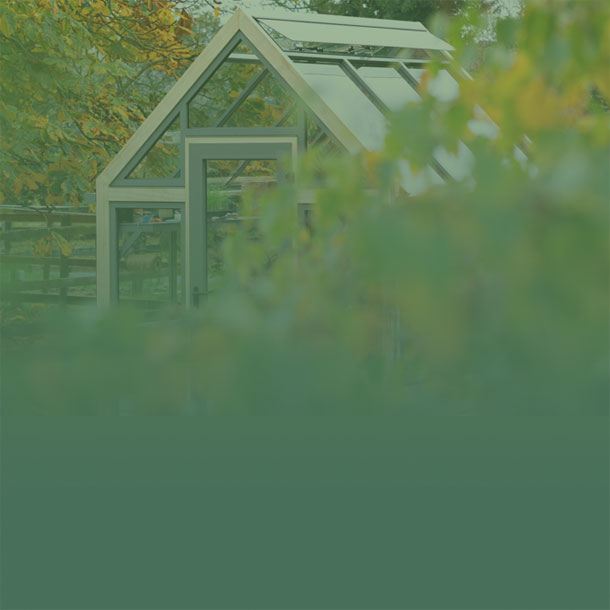-

Choosing the right Greenhouse
With gardening as popular a pastime now as in any point in history it is good to see the same technologies and attention to design being applied to the garden as you would expect in your home. There’s plenty of wonderful ideas for the gardener to enhance their garden and the time they spend in it. A plethora of structures, sheds, greenhouses and garden ornamentation weave into endless combinations within the garden.
Intensive planting and the huge growth in the popularity of ‘grow your own’ produce have driven the need to extend the growing season from February through to October and so the garden has placed more focus than ever before on the role of the greenhouse. A range of materials, shapes and sizes often complicate the process of choosing the right greenhouse.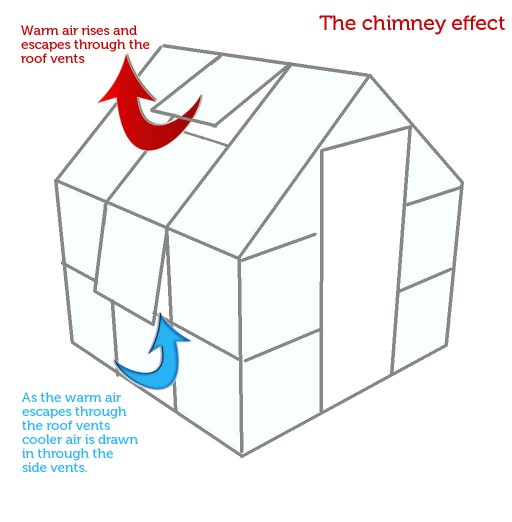
Ventilation
Ventilation is a major tool in ensuring temperature control within a greenhouse and is also key against air born diseases. A series of roof vents should be found along the ridge of the glasshouse to achieve good air movement. As you might expect several vents are much better than few, the preference should be for structures with a combination of roof ventilation and side vents. This enables the chimney effect as illustrated. Take a look at this greenhouse by Cultivar, you can see this has full length ridge ventilation as well as low level vents running the full length of the greenhouse. On larger houses this should be not less than 15% of the base area. Generally speaking the larger the volume of the glasshouse the easier it is to control the temperature. No better is this shown than on the large commercial greenhouse you see. So if you can afford and accommodate a larger greenhouse then do so.
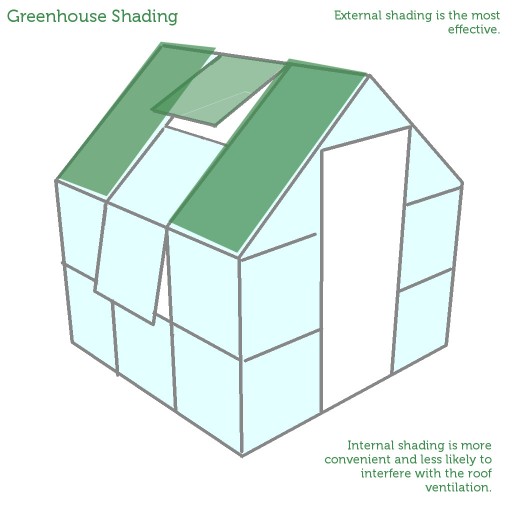
Shading
In addition to ventilation, shading will be needed in the spring and summer if growing is to be a year round occupation. For the greatest effectiveness this should be fitted externally. Internal shading reduces light but does little to reduce temperature build up.
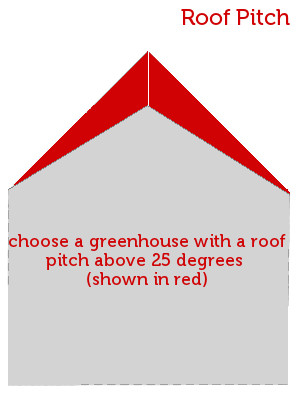
Roof Pitch
Unless a particular crop is to be grown or displayed most glasshouses should be chosen to offer the most flexible growing environment. In order to achieve this goal a glasshouse should be selected with a steep pitch of roof, at least 25 degrees or greater from the horizontal. This reinforces the natural chimney effect of hot air rises. A steep roof pitch also means that there will be more working height above the greenhouse staging. Air frost takes longer to descend through the glasshouse protecting unheated plants for longer. In addition water runs off the roof more quickly, leaving the roof cleaner for more light to penetrate. Falling twigs are more likely to offer a glancing blow than a direct impact.

Materials
Glasshouses have traditionally been made from wood, which usually requires regular upkeep. Soft woods such as cedar if properly maintained can last a lifetime. As an alternative to wood a number of companies fabricate greenhouses from aluminium. The aluminium framework can be powder coated in polyester to provide a durable finish that does not require regular upkeep. Unlike wood aluminium is both stable and available in long lengths. Consequently aluminium structures can often span larger areas without the huge costs associated with buying long and chunky sections of wood.
Lean-tos
Many of the current greenhouse designs are poached from the Victorian era. The old walled gardens of the grand houses of England were covered in ranges of glasshouse all dedicated for a particular growing purpose. Lean-to’s against the wall were typically filled with fruit. Vines or peaches sweeping up the long runs of glass, benefitting from the warmth captured by the large brick walls. The shade offered by a North facing wall could be used for a Fernery.
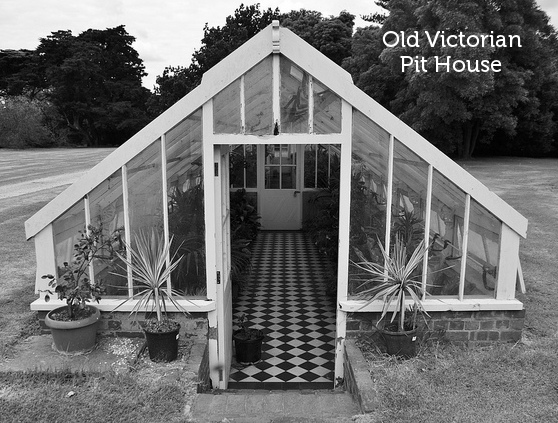
Pit Houses
Low glasshouses dug into the ground are often referred to as pit houses. These are generally used for propagating plants that reach up to the light. There’s been a move away from pit houses in the UK in recent decades in favour of free standing greenhouses.
Planthouses
Traditionally planthouses were a home for display plants, such as geraniums. The hard and dirty work could be done in the planthouse. When the plants are in bloom they could be moved to the house to be enjoyed before finally returning to the planthouse at the end of the flowering season.
Greenhouses bases
Again taking from the Victorian era it is popular to construct low walls, a desirable base as it does reduce the risk of lower sheets of glass being broken, lowers heatloss and looks attractive. Indeed the design of the wall can link the character of the glasshouse to that of the main dwelling. Make sure the glasshouse is close enough to use. Then check water and electricity are available near the site. In addition the use of a northerly aspect should be discouraged, as should overhanging trees or the close proximity of high walls.
Visual Impact
Finally the visual impact that the greenhouse will have on the garden must be considered. It is the heart of the garden and should be treated as such. The darker the glasshouse the more it will be hidden – the eye stopping on white or light coloured structures. Remember you have one opportunity to make an impression with your garden – the key to that impact could be the correct choice of greenhouse.
Setting up your greenhouse
There are three main areas, other than paths, within a greenhouse. These include staging, open soil beds from which plants can be grown or gravel beds at ground level on which plants can be stood and watered. The practice of building the glasshouse on a concrete base should be discouraged. Water tends to stand on the concrete, which becomes slippery with algae. In addition the evacuation of water is difficult and most importantly the flexibility of what can be grown is reduced. Build small walls or set supporting framework around the perimeter only.
Temperature is always an issue when deciding on how to use a glasshouse. While this is rarely a problem in the summer months, it is the temperature outside of the summer months which really dictates what can be grown. There are four main temperature regimes as follows:
- 0 degree C – Cold Glasshouse. An environment often provided by a cold frame.
- 6 degrees C – frost free
- 15 degrees C – Warm – almost everything will grow in this temperature range.
- 22 Degrees C Hot
Ideally the greenhouse will be subdivided with an internal partition allowing two or more temperature zones to be maintained although this will be governed by the space and budget you have available. While all of the above are key to growing, the role of the glasshouse is now only an entry qualification in the designer greenhouse market. The greenhouse, with it’s steep pitched roof, range of colours and glass widths are not only seen as an integral part of the garden design but are often treated as the focal point of the garden. This need for the greenhouse to be the limelight has ensured that the look, colour and flexibility of design are now considerations in the choice of glasshouse and options that many companies have incorporated.

